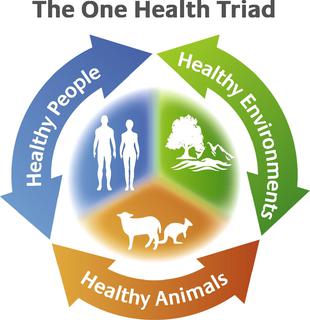THE CLUB
SMART HEALTH
SMART HEALTH is based on SUSTAINABLITY – Looking forward to create sustainable “HEALTH ISLANDS” together:
SMART ISLANDS
SMART ISLANDS are based on SUSTAINABILITY –
for the islanders and all their guests together, their animals and the whole nature on the islands and in the World Heritage Wadden Sea. Looking forward to ISLAND PARTNERSHIPS FOR SUSTAINABILITY with Islands in Europe and beyond.
SMART ISLANDS WITH SMART ONE HEALTH
“At the latest in the face of the global corona pandemic, we have to completely restructure medicine, health sciences, health industry and the health systems worldwide towards sustainability. It is about human life, the life of our families and friends, our employees and colleagues, the life of those entrusted to us and it is about our life and our nature. Join RÜNJHAID! & MEDICINALE e.V. as CONCERNED CITIZEN with your mind & heart, your network and your leadership to synchronize action plans and strategies to accelerate the scaling and implementation of sustainable solutions and results. TOGETHER FIRST – from bench to bedside and from bedside to bench – it’s about time, now !”
Dr. Henri Michael von Blanquet, President
ONE HEALTH
The concept of One Health is the unity of multiple practices that work together locally, nationally, and globally to help achieve optimal health for people, animals, and the environment. When the people, animals, and environment are put together they make up the One Health Triad . The One Health Triad shows how the health of people, animals, and the environment are linked to one another. With One Health being a worldwide concept it makes it easier to advance health care in the 21st century. When this concept is used, and implied properly it can help protect and save the lives of both people, animals, and the environment in the present and future generations.
“No one discipline or sector of society holds enough knowledge and resources to single-handedly prevent the emergence or resurgence of diseases while maintaining and improving the health and well-being of all species in today’s globalized world. No one country can reverse the patterns of land-use change, marine degradation, carbon release, soil degradation, environmental pollution, and species extinctions that, if left unmitigated, undermine the health of people and wildlife. Intensive work within each discipline is essential to develop expertise.” — The Berlin Principles for #One Health

ONE HEALTH History
The recognition that environmental factors can impact human health can be traced as far back as to the father of medicine Hippocrates of Kos Island (c. 460 BCE – c. 370 BCE) in his text “On Airs, Waters, and Places”. He promoted the concept that public health depended on a clean environment. In the mid-1800s, Rudolf Virchow, a physician at Charité Berlin, recognized the link between animal and human medicine, came up with the term zoonosis to describe a disease that can be passed from animals to humans, and actively advocated for veterinary medical education.
It was over a century later before the ideas laid out by Virchow were integrated into a single health model connecting human health with animal health.
In 1964, Dr. Calvin Schwabe a former member of World Health Organization (WHO) and the founding chair of Department of Epidemiology and Preventive Medicine at the Veterinary School at the University of California Davis, called for a “One Medicine” model emphasizing the need for collaboration between human and wildlife pathologist as a means of controlling and even preventing disease spread. It wouldn’t be for another four decades before the One Health became a reality with the 12 Manhattan Principles, where human and animal pathologists called for “One Health, One World.
In 2004, The Wildlife Conservation Society held a conference at Rockefeller University in New York called One World, One Health, out of which the twelve Manhattan Principles were created. These principles highlighted links between humans, animals, and the environment, how these links are integral to understanding disease dynamics, and the importance of interdisciplinary approaches to prevention, education, investment, and policy development.
The One Health Model has gained momentum in recent years due to the discovery of the multiple interconnections that exist between animal and human disease. Recent estimates place zoonotic diseases as the source 60% of total human pathogens, and 75% of emerging human pathogens
With #COVID19 we all need to take action towards #OneHealth together for #NewNormal.
THE BERLIN PRINCIPLES for ONE HEALTH
We urge world leaders, governments, civil society, the global health and conservation communities, academia and scientific institutions, business, finance leaders, and investment holders to:
1) Recognize and take action to: retain the essential health links between humans, wildlife, domesticated animals and plants, and all nature; and ensure the conservation and protection of biodiversity, which interwoven with intact and functional ecosystems provides the critical foundational infrastructure of life, health and well-being on our planet;
2) Take action to develop strong institutions that integrate understanding of human and animal health with the health of the environment and invest in the translation of robust science- based knowledge into policy and practice;
3) Take action to combat the current climate crisis, which is creating new severe threats to human, animal and environmental health, and exacerbating existing challenges;
4) Recognize that decisions regarding land, air, sea, and freshwater use directly impact health and wellbeing of humans, animals and ecosystems and that alterations in ecosystems paired with decreased resilience generate shifts in communicable and non-communicable disease emergence, exacerbation and spread; and take action accordingly to eliminate or mitigate these impacts;
5) Devise adaptive, holistic and forward-looking approaches to the detection, prevention, monitoring, control and mitigation of emerging/resurging diseases and exacerbating communicable and non-communicable diseases, that incorporate the complex interconnections among species, ecosystems, and human society, while accounting fully for harmful economic drivers, and perverse subsidies;
6) Take action to meaningfully integrate biodiversity conservation perspectives and human health and well-being when developing solutions for communicable and non-communicable disease threats;
7) Increase cross-sectoral investment in the global human, livestock, wildlife, plant and ecosystem health infrastructure and international funding mechanisms for the protection of ecosystems, commensurate with the serious nature of emerging/resurging and exacerbating communicable and non-communicable disease threats to life on our planet;
8) Enhance capacity for cross-sectoral and trans-disciplinary health surveillance and clear, timely information sharing to improve coordination of responses among governments and NGOs, health, academia and other institutions, industry and other stakeholders;
9) Form participatory, collaborative relationships among governments, NGOs, and Indigenous Peoples and local communities while strengthening the public sector to meet the challenges of global health and biodiversity conservation; and
10) Invest in educating and raising awareness for global citizenship and holistic planetary health approaches among children and adults in schools, communities, and universities while also influencing policy processes to increase recognition that human health ultimately depends on ecosystem integrity and a healthy planet.


